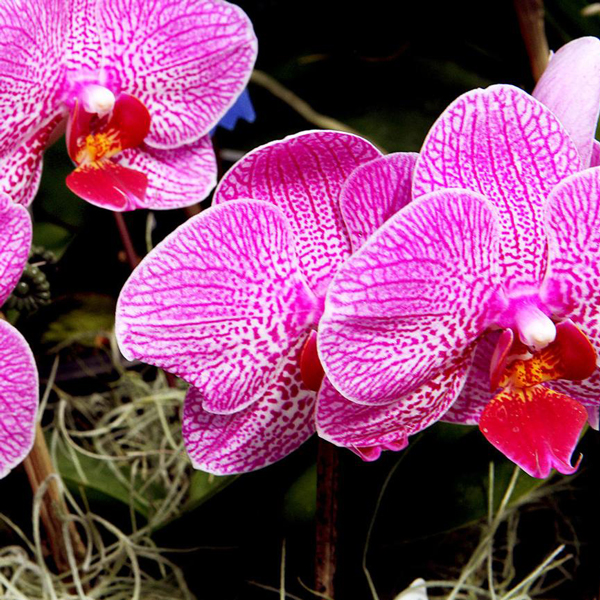
By Alma Gaul | QCTimes.com
Orchid flowers are unrivaled in the plant world for their beauty, complexity and incredible diversity.
Because of their amazing ability to adapt to their given environment, orchids can be found in the equatorial tropics, the arctic tundra and everywhere in between.
With so many different orchid varieties that thrive in so many different growing conditions, it is relatively easy to find an orchid that is well suited to the conditions that you provide – whether it is a kitchen window or a full-size greenhouse.
Here are questions about growing orchids with answers from horticulturists with Iowa State University Extension and Outreach.
To have more questions answered contact Hortline at 515-294-3108 or hortline@iastate.edu.
Q: Which is the best orchid to grow in the home?
A: The moth orchid (Phalaenopsis spp.) is considered by many to be the easiest orchid to grow indoors. They bloom for three or four months (sometimes longer) in winter/early spring. Flowers may be white, pink, purple, orange or yellow. The shape of the three-lobed flowers resembles a moth, hence the common name.
Q: What are the light requirements for moth orchids?
A: Moth orchids grow best in bright, indirect light. Direct sun may actually harm the foliage. Ideal sites are east- and north-facing windows. Plants in a south window should be shaded with a sheer curtain or placed out of direct sunlight.
Phalaenopsis orchids will not grow or flower well in poorly lit areas. Fluorescent and LED lighting can be used to supplement natural lighting in poorly lit areas. Place the lights a few inches above the plants. Leave the lights on for 12 to 16 hours each day.
Q: How often should moth orchids be watered?
A: Moth orchids like well-drained growing media that are kept evenly moist. Growing media include fir bark, aliflor (an expanded clay material) and sphagnum moss. Moth orchids should be watered well and then allowed to dry slightly between waterings.
A thorough watering once a week is usually sufficient for plants growing in bark media. Sphagnum moss absorbs more water than bark materials and should be watered a little less frequently. Plants are susceptible to root rots and death when watered too often.
Q: What is the proper indoor temperature for moth orchids?
A: Moth orchids prefer daytime temperatures of 70 to 80 degrees and nighttime temperatures of 60 to 70. Cool nighttime temperatures (around 60) in fall help initiate flower development. Avoid exposing plants to temperatures above 95 or below 60.
Q: What is the proper humidity level for moth orchids?
A: Phalaenopsis orchids prefer a relative humidity of 50 to 60 percent. Unfortunately, the humidity levels in most homes during the winter months are well below this range.
Humidity levels indoors can be increased with a room humidifier or by placing the plant on a tray or saucer filled with pebbles and water. The bottom of the pot should be kept above the water line. The evaporation of water from the tray will increase the relative humidity in the vicinity of the plant.
Q: How often should I fertilize a moth orchid?
A: Fertilize about every two weeks with a dilute fertilizer solution in spring and summer. Fertilize less frequently in fall and winter.
Q: When should I remove the flower spike on my moth orchid?
A: Moth orchids often re-bloom if given time. Leave the flower stem (spike) on the plant when the last flower fades. Side shoots with additional flowers often develop on the stem within eight to 10 weeks. The flower stem can be removed when the stem has dried up and died.
From https://qctimes.com/lifestyles/home-and-garden/moth-orchids-are-easiest-to-grow-flower/article_c81bf2ee-968d-5350-bf56-7c6656deb3b2.html









